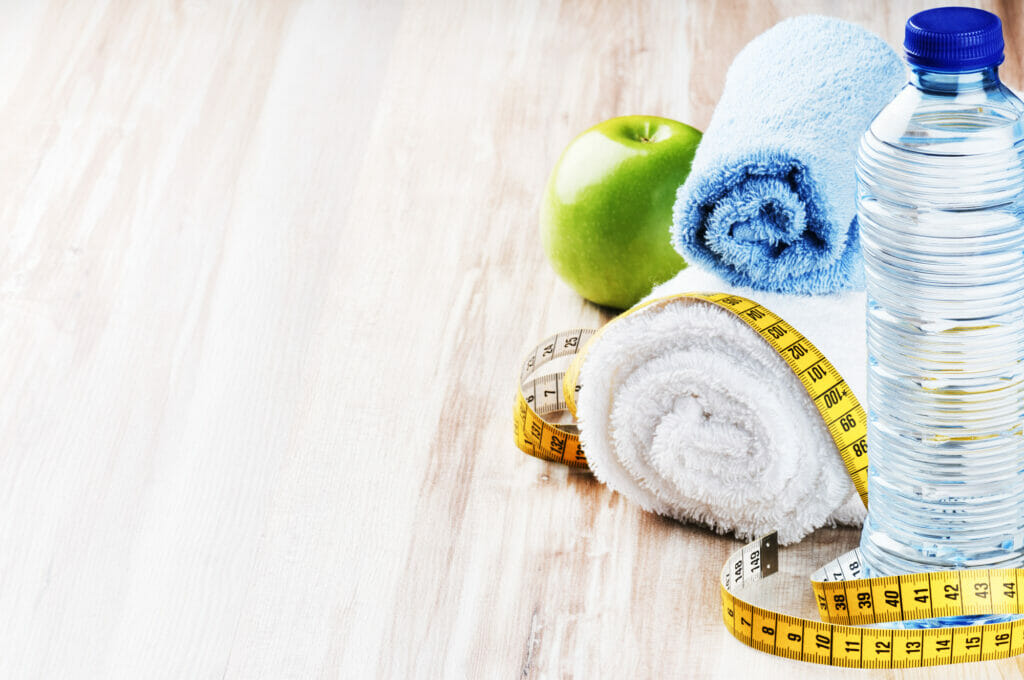
Most of us have been spending more time at home during the past year. Less exercise and the same amount of food intake can have major effects on our health. Some people have become more active, but a greater number have become less active. This does not come as a surprise, with most gyms closed and being stuck in our homes. Add to that the situational stress and unexpected cravings for comfort food within constant reach and … The “Quarantine-15” is a fact. Here are five steps to make healthier life choices to lose and keep off those unwanted extra pounds!
Step 1 – Find Your Motivation
Find your true motivation for eating differently, eating less, and/or eating healthier. That answer might seem simple, such as to fit into a smaller size jeans. However, it can be more profound, e.g. growing older healthily, being an energetic parent, or climbing a mountain with friends. Understanding one's deeper intrinsic motivations makes it easier to say no to unhealthy food or run that mile a day. The more concrete you formulate your goals, the less likely you will fall into old habits that hinder your progress.
Pro tip: Do not focus on the number of pounds you want to lose but how you can learn to make permanent changes to your diet.
Formulate goals
- What is your primary goal to become healthier?
For example: I want to feel fit.
- Why is that your goal?
For example: Because I want to be able to play baseball with my children.
- Why is that important to you?
For example: I want to build a good relationship with them and set good examples.
Step 2 – Find Your Weaknesses
It is essential to know what your weaknesses are when it comes to food. If you are not aware of your unhealthy habits, it is difficult to balance what you eat with your daily exercise. Awareness of existing eating habits can help to reach your goals and makes losing or maintaining weight easier.
A food diary of what you eat can help identify your weaknesses and to recognize the difficult moments throughout the day.
The following questions will help to recognize your patterns:
- What are the circumstances under which you eat/snack?
- What has driven you to eat/snack?
- What is the time?
If you would like to take it to the next level, there are various apps available to help you track your progress with eating habits, calorie intake, and daily exercise. Often, these apps can provide an insight into which nutrients are in your diet as well.
Step 3 – Prevention Planning
Willpower is necessary to be able to resist temptation. Focus your willpower from the start of each day. Devise a prevention plan to help you resist unhealthier snacks, for example. If there are a lot of unhealthy snacks in the house, you will be more likely to eat those. Find and buy healthier alternatives that can be consumed during a moment of weakness. In a similar mindset, the more we have, the more we consume. Buy smaller quantities. For example, buy the small bags of chips instead of the family size. Set goals for what you are going to do when a craving occurs. Formulate positively – plan what TO DO vs. what NOT TO DO. For example: “When I am driving to work, I will bring a bottle of water and eat an apple” instead of, “When I am driving, I am not going to eat fast food.” The negative approach makes us feel as if we are depriving ourselves and is demotivating.
To help figure out what works in times of craving, answer the following questions:
- At what moments during the day do you have a hard time eating healthy?
- Which precautions would help you during these moments?
- What snacks are you craving? Sweet, salty, or savory?
- Which alternatives are available to help you with that craving?
Step 4 – Make Eating a Break
Most people eat fast and finish a meal without realizing it. Multitasking during eating, for example, in front of the television or eating while working, causes us to eat more. Eating with more attention can help us create a new relationship with food. The result – we become more aware, more relaxed, and healthier. Bringing mindfulness into your diet means paying attention to your body, notice what it needs and how much. Scientific research shows that mindful eating helps us enjoy the meal more and reduces our tendencies to overeat.
Tips to Eat Mindfully:
- Enjoy the process. The more time and effort you put into creating a meal, the more likely you will appreciate it and take your time to consume it. Pay attention to the process of cooking, decorating the table, serving it on a nice platter, etc. Even when shopping for groceries, pick out the ingredients with care.
- Eat consciously. A short moment of silence before starting to eat calms the body and mind and focuses on the experience and digestion of the meal.
- Become more critical when it comes to food choices. Choose quality over quantity.
- Vary. Deviating from regular food choices helps you eat more attentively. Choose different toppings, shop for groceries at a different store, and try new recipes.
- Take your time. Set a timer for 20 minutes and take that time to eat a meal.
- Put down your cutlery after each bite. Taking a break between bites helps slow down eating and gives your body time to get the message to your brain that you are full.
- Take small bites and chew steadily. It is advised to chew, on average, 32 times before swallowing. Finish chewing and swallow completely before taking another bite.
- Do not get too hungry. If you wait too long and become “hangry,” taking your time and enjoying a meal becomes a greater challenge.
Step 5 – Small Steps
Losing weight is not an all-or-nothing situation. It is possible to become healthier and lose weight through small daily improvements. It is more important to gradually shift the balance from unhealthy to more healthy choices to improve your health. When on a diet, too much energy goes towards what you can or cannot eat. Becoming conscious about food is what helps in the process of losing weight, which is also possible without a diet. Focusing on changing small eating or exercise habits is a great start.
Examples:
- Leave three bites after every meal.
- Drink a glass of water before every meal.
- Run one mile a day.
- Avoid drinks with calories.
- Take 10.000 steps a day.
- Keep a food diary for a month.
- Eat one fruit and vegetable a day.
Write down three goals and put the list on the fridge as a reminder. Cross off your goals every day. Seeing those checkmarks behind your goals will help you when you miss a day and decide to eat half a bag of chips. Move on and focus on your successes!
Goals:
Final note
Losing weight is not a skill. It is something one can achieve while mastering other skills such as self-control and awareness, finding the motivation to exercise, and insight into what implies a healthy diet. Eating healthy is a way to take care of yourself, both mentally and physically. Healthier eating habits and exercising regularly will get the best results. Try to figure out how you can make the process of losing weight more fun. Find a sport you enjoy, walk more, go bike with a friend. Make healthy food that you enjoy. Doing what you like will help to follow through on your goals.






















































